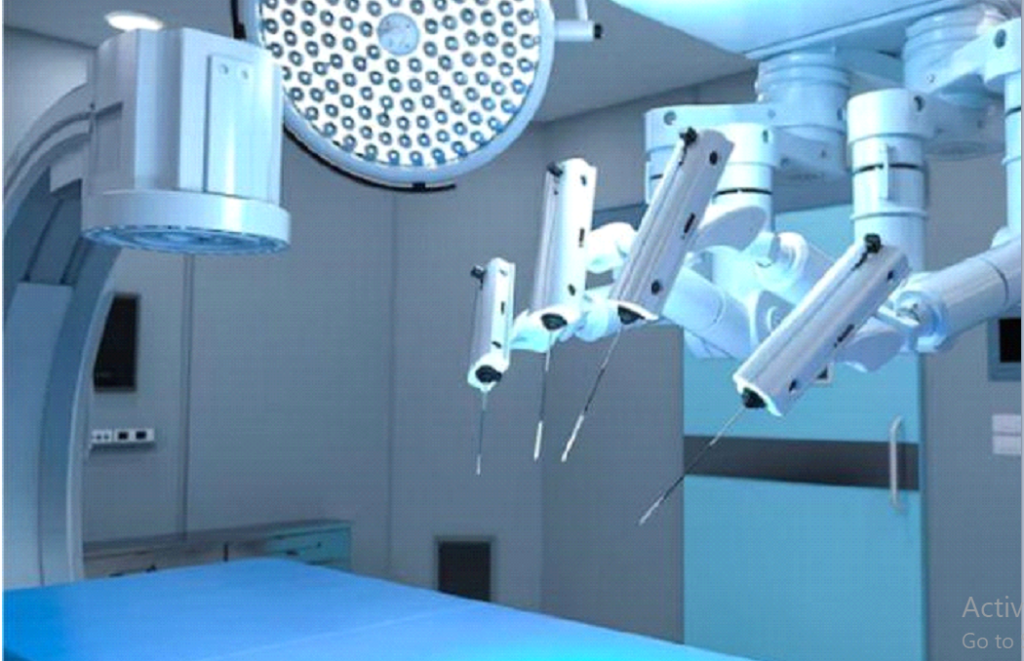Revolutionizing Orthopedics: The Transformative Role of Robotic Surgery


In the ever-evolving landscape of medical science, technological advancements continue to reshape the way we approach healthcare. One such groundbreaking development is the integration of robotics into orthopedic surgery, a field that deals with the musculoskeletal system. Robotic surgery has emerged as a game-changer, offering precision in the placement of Orthopaedic Implants, efficiency, and improved patient outcomes in orthopedic procedures.
Contents
The Role of Robotics Surgery in Orthopedics – Advancing the Field
Precision and Accuracy
One of the key advantages of robotic surgery in orthopedics is the unparalleled precision it brings to the operating room. Surgeons can now plan and execute complex procedures with a level of accuracy that was once unimaginable. The use of robotic systems allows for meticulous preoperative planning, creating a roadmap for surgeons to follow during the actual procedure. This precision is particularly crucial in orthopedics, where intricate maneuvers are often required to address issues like joint replacements, spine surgery, and arthroscopic procedures.
Enhanced Visualization
Robotic systems provide surgeons with enhanced visualization tools, enabling them to navigate through the human anatomy with unprecedented clarity. High-definition cameras and magnification capabilities allow for a detailed view of the surgical site, helping surgeons identify and address issues that may be challenging to spot with traditional methods. This enhanced visualization contributes to better decision-making during surgery, reducing the risk of complications and improving overall patient safety.
Minimally Invasive Approach
Orthopedic surgeries traditionally involve large incisions and extensive tissue disruption. Robotic surgery, however, facilitates a minimally invasive approach. Smaller incisions mean less trauma to surrounding tissues, reduced blood loss, and faster recovery times for patients.
Customized Procedures
Every patient is unique, and the beauty of robotic surgery in orthopedics lies in its ability to tailor procedures to individual anatomies. Through advanced imaging and three-dimensional mapping, surgeons can create a personalized surgical plan for each patient. This level of customization ensures that interventions are precisely tailored to the patient’s specific needs, leading to improved outcomes and a more comfortable recovery process.
Rehabilitation and Recovery
The role of robotics in orthopedics extends beyond the operating room. Robotic-assisted rehabilitation is becoming increasingly popular, aiding patients in their postoperative recovery. These robotic systems assist patients in performing targeted exercises, tracking progress, and providing valuable feedback to both patients and healthcare providers. This innovative approach to rehabilitation accelerates recovery, enhances mobility, and promotes long-term joint health.
Challenges and Future Prospects
While the integration of robotics in orthopedics has proven to be transformative, challenges such as cost, training, and ongoing research persist. As technology continues to advance, addressing these challenges will be crucial to ensuring widespread accessibility and maximizing the benefits of robotic surgery.
Conclusion
In the realm of orthopedics, the advent of robotic surgery marks a paradigm shift in how we approach and conduct procedures. The precision, enhanced visualization, minimally invasive techniques, and personalized approach afforded by robotics contribute to improved patient outcomes and a brighter future for orthopedic care.
Get acquainted with the futuristic development and advancements in the field of orthopedics by participating in global conferences like the AAOS Exhibition in 2024.
Also Read: Eplus4car





